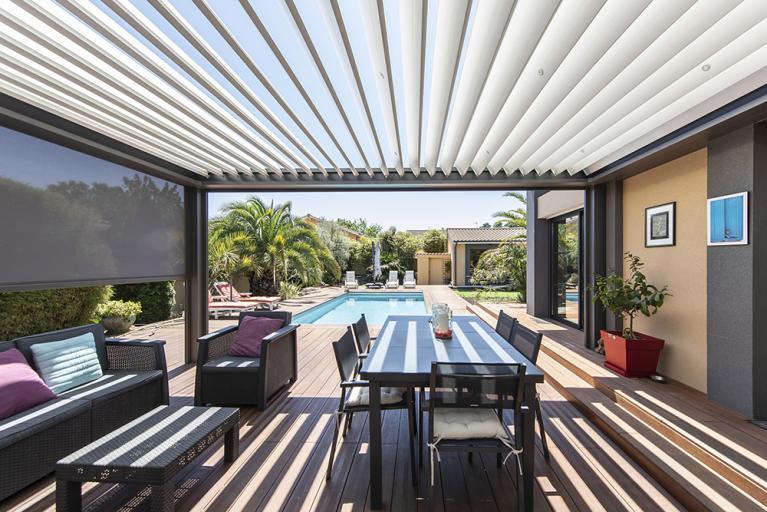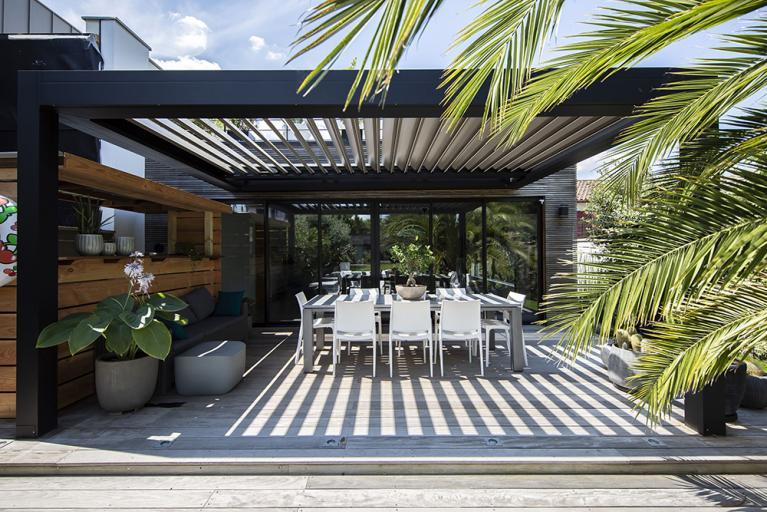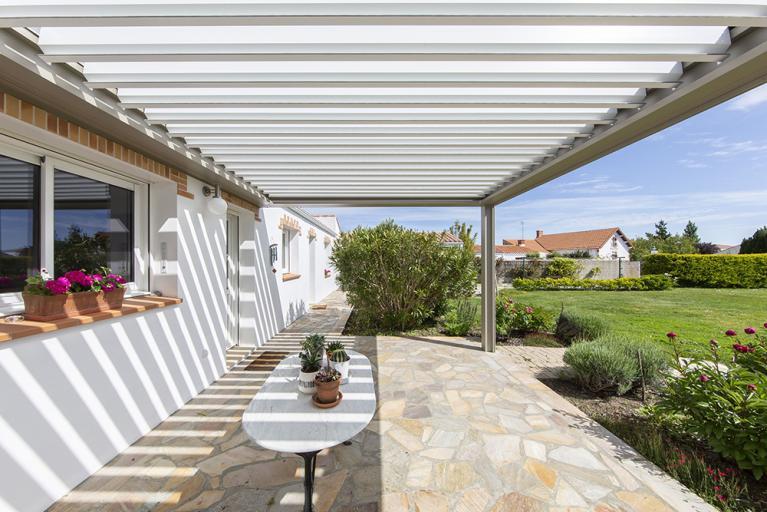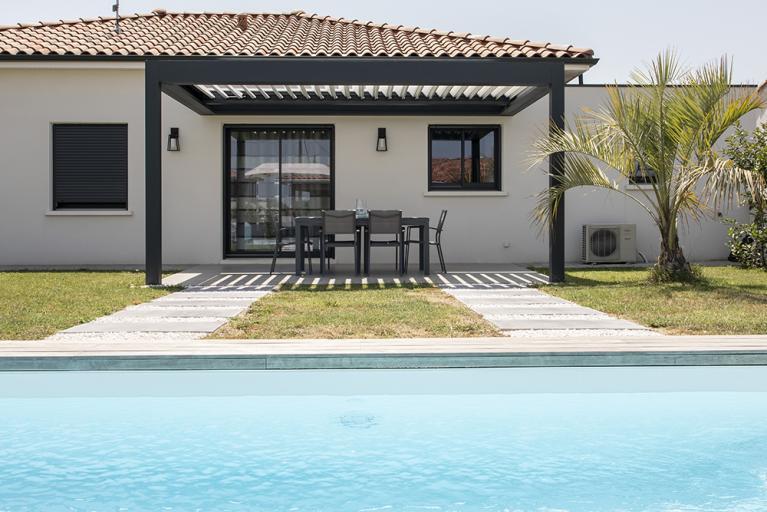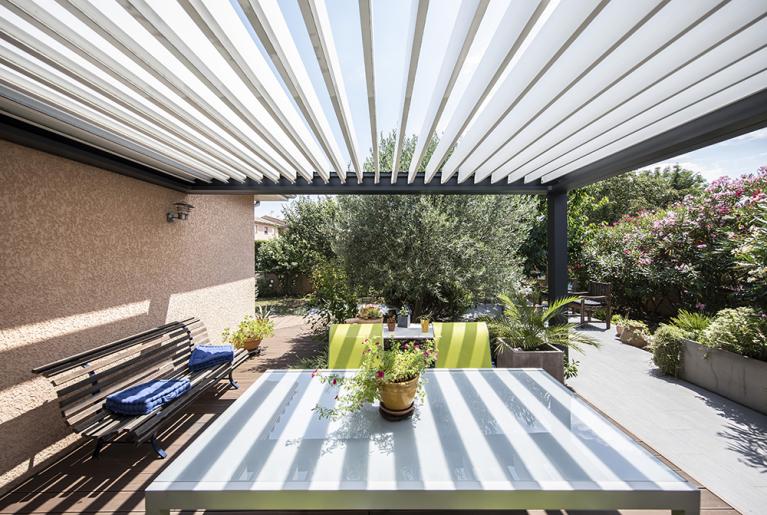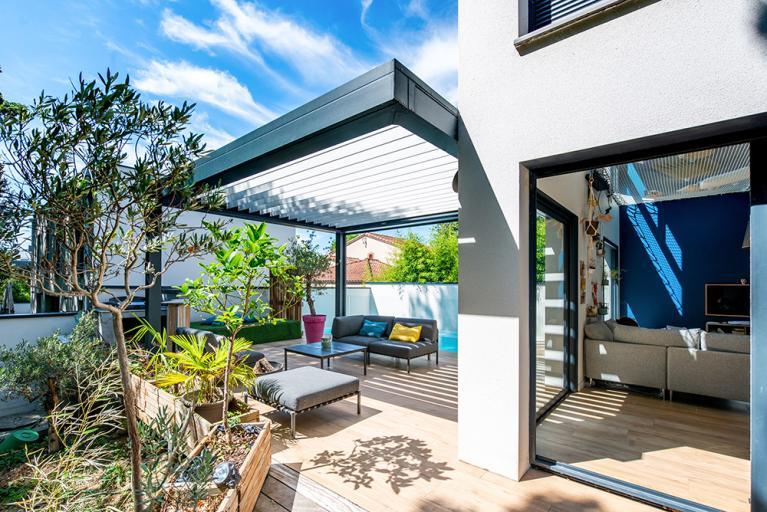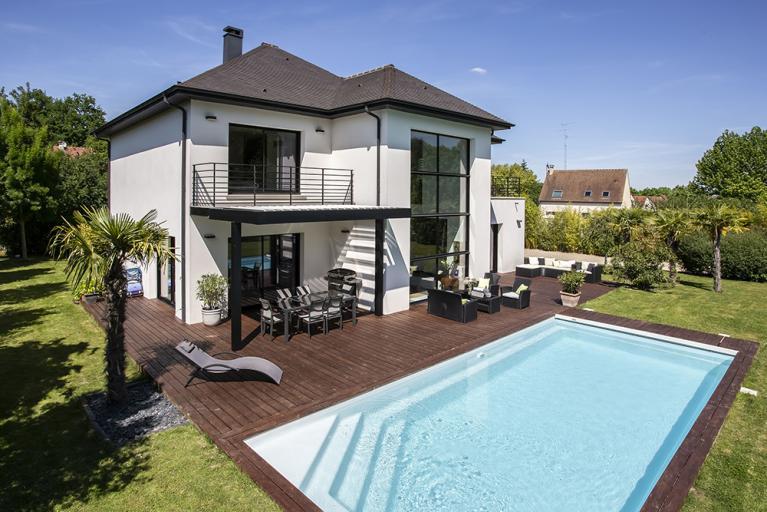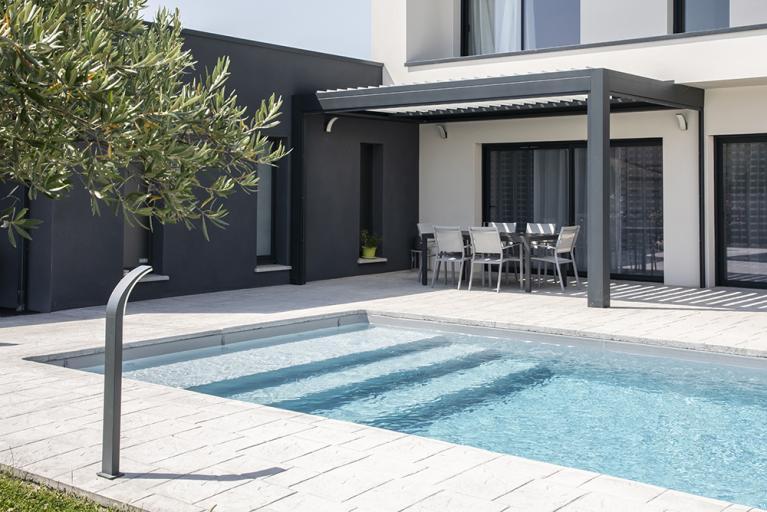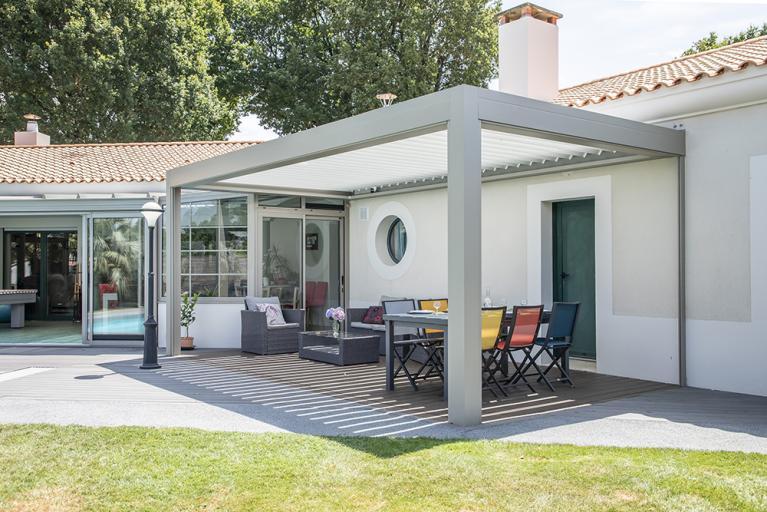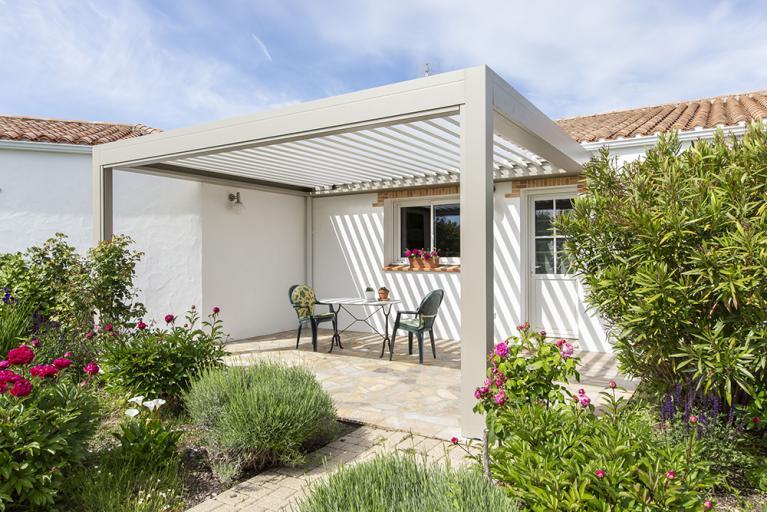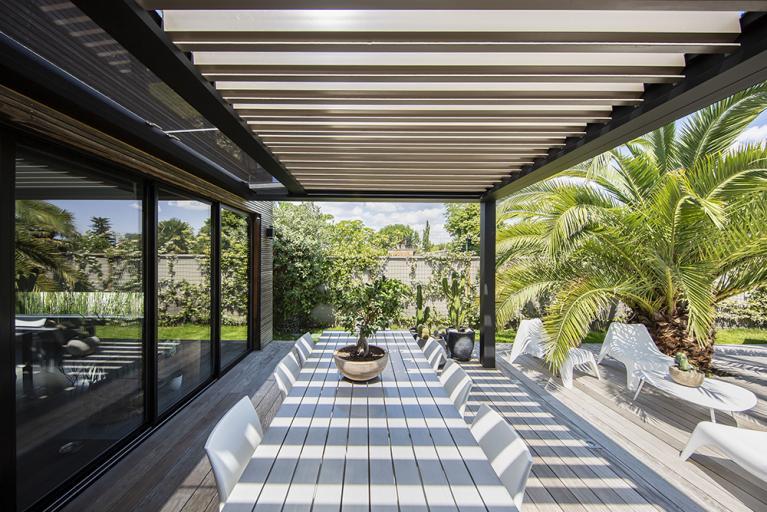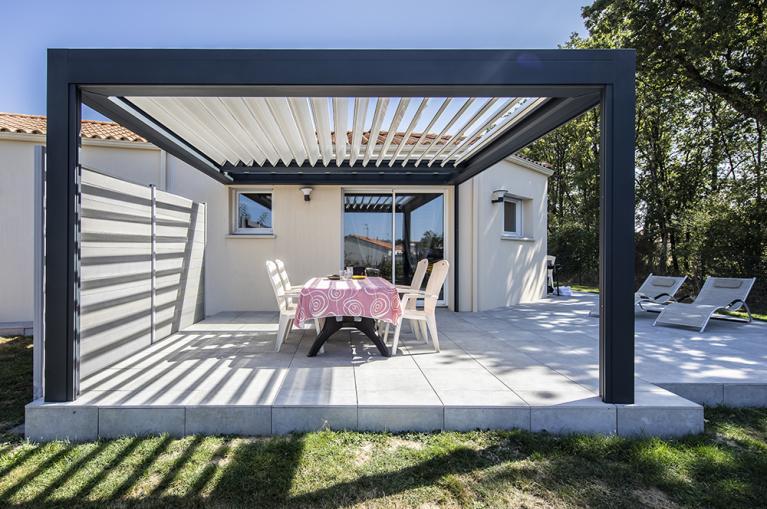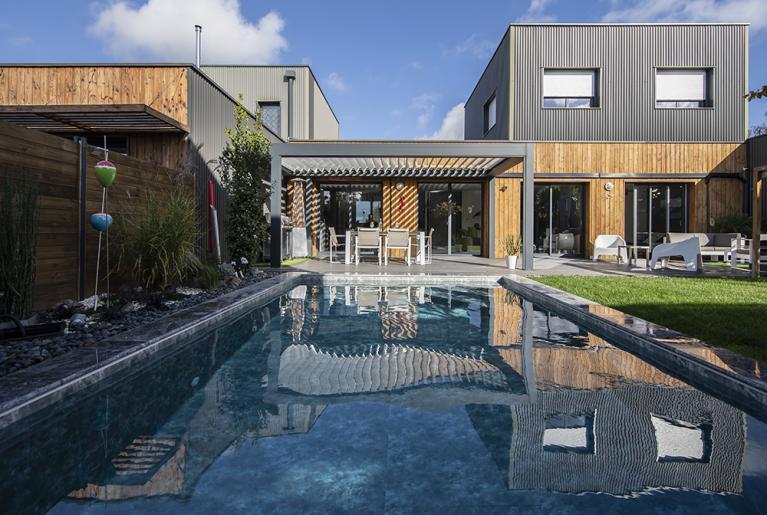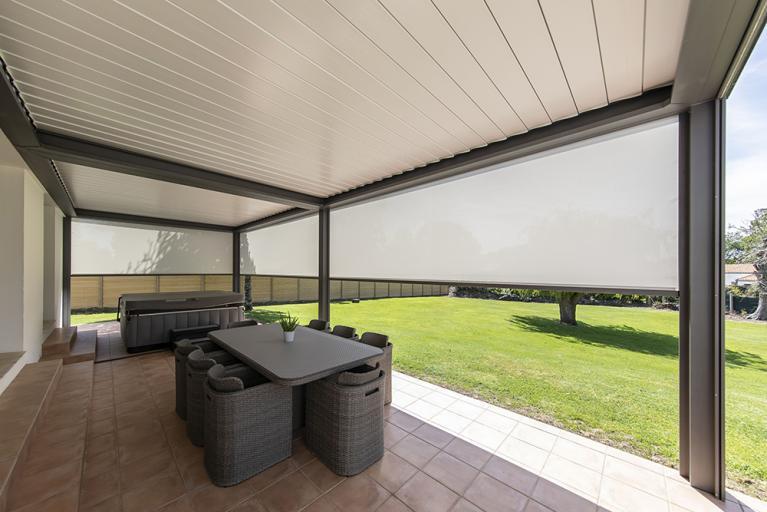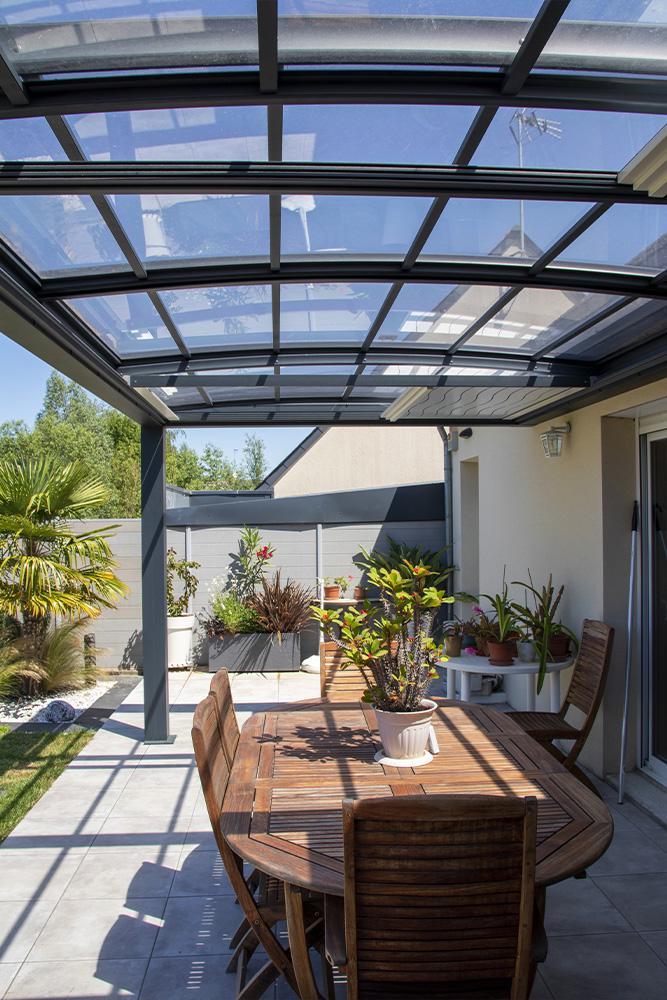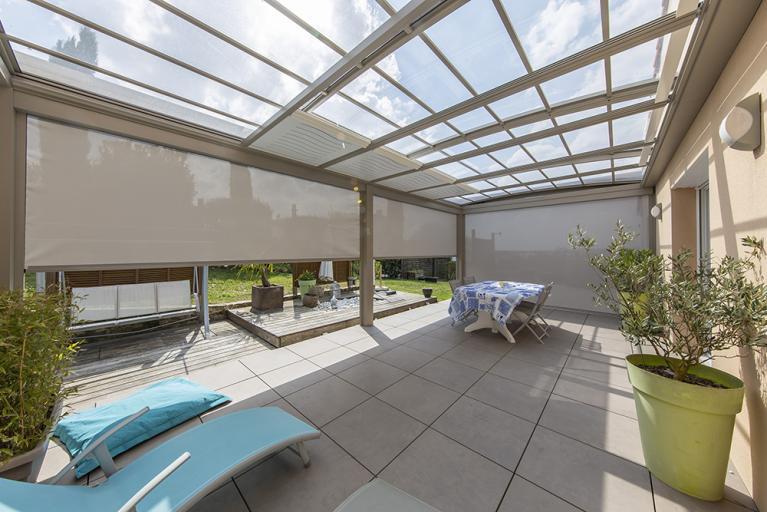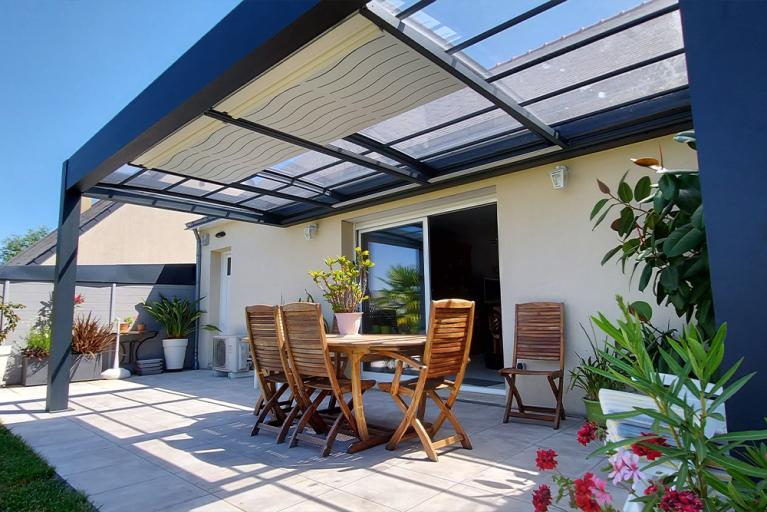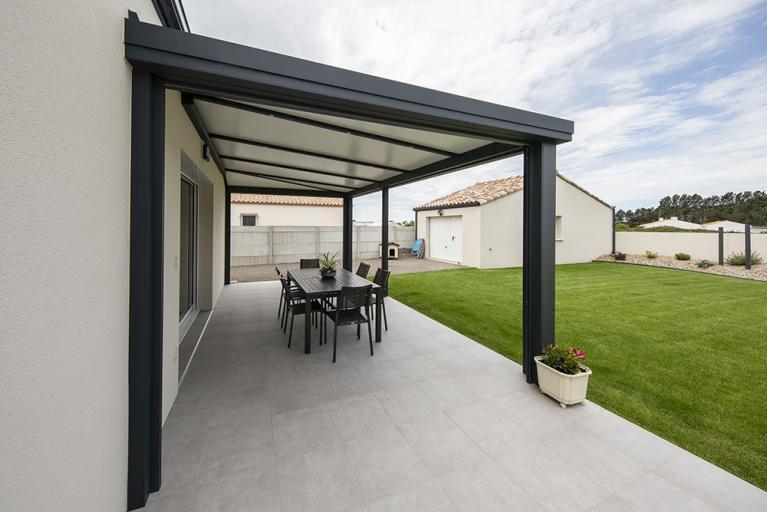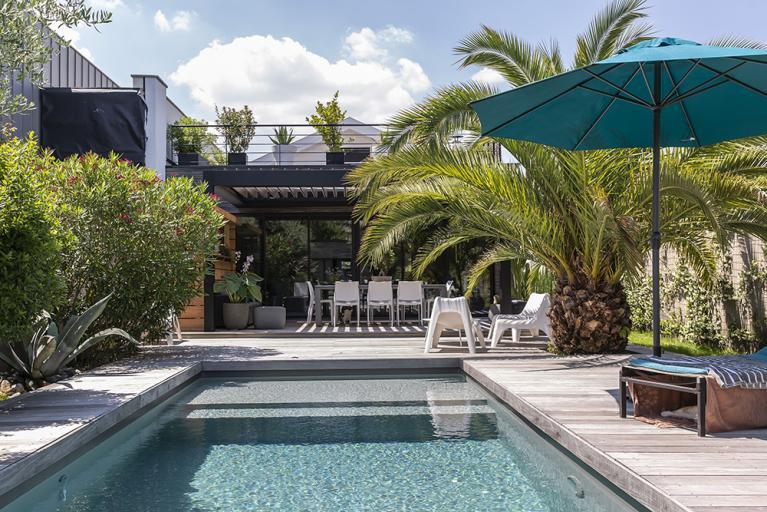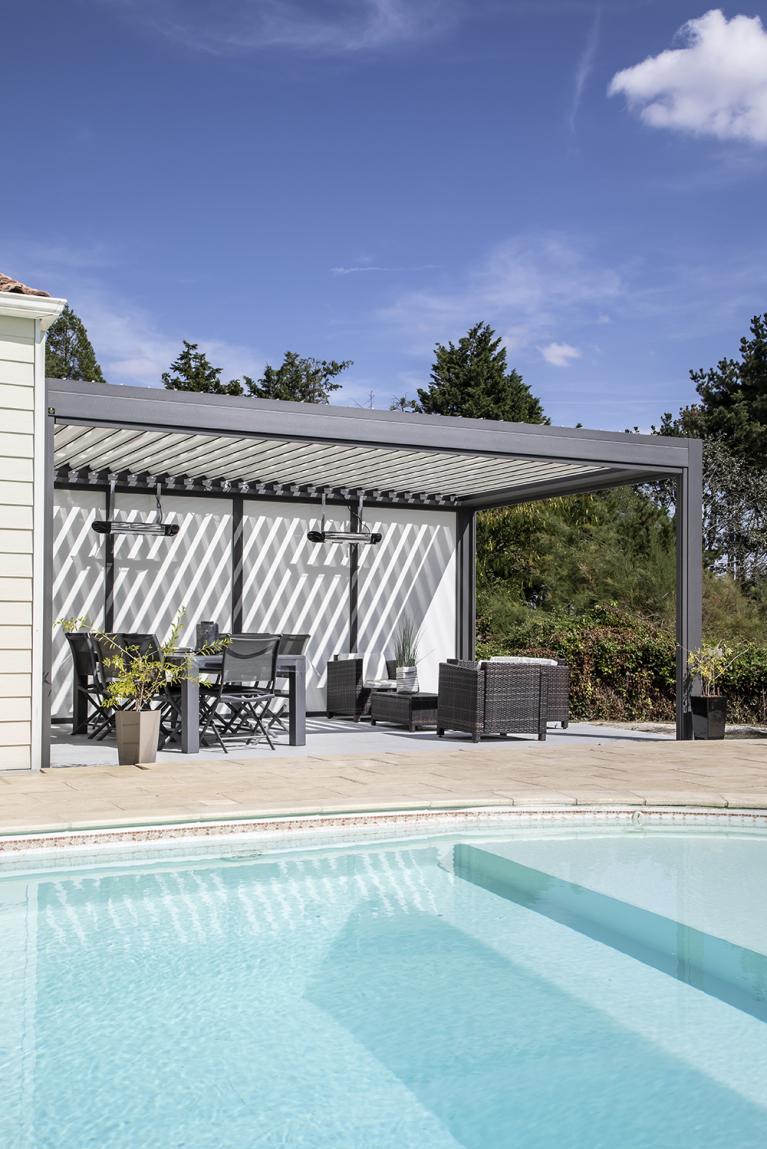What is a bioclimatic pergola?
The bioclimatic pergola is the most flexible version of a pergola. With it, you can be in the sun or in the shade. Tilting slats allow you to change the appearance of the roof, depending on the weather or sun conditions.
What are the advantages of a bioclimatic pergola?
While protection from the sun or rain seems an obvious consideration, depending on the orientation of the slats, there are other aspects to take into account too.
For example, being able to tilt the slats while casting shade, but without closing them completely, encourages air circulation. This creates draughts, which are very welcome when temperatures rise. When closed, the slats can withstand winds of up to 120 km/h, making them suitable for installation in all regions of France.
Conversely, when the slats are positioned to let the sun shine through, the sun will reflect off the aluminium and its rays will be more powerful. As a result, the light entering your home will be more intense, which will be much appreciated on warm winter days.
By adding side closures to your pergola, you can almost have an extra room, all at a reasonable cost. What's more, you can even add heating systems to your pergola, in addition to lights. So it can be used all year round. And, what's more, it will adapt to every season.
What's more, most bioclimatic pergolas are made of aluminium. Aluminium is one of the most hard-wearing and easy-to-maintain materials available. The structure will stand the test of time and the elements, while looking as good as new.
The bioclimatic pergola is the most advanced version of the pergola, and helps to save energy in your home.
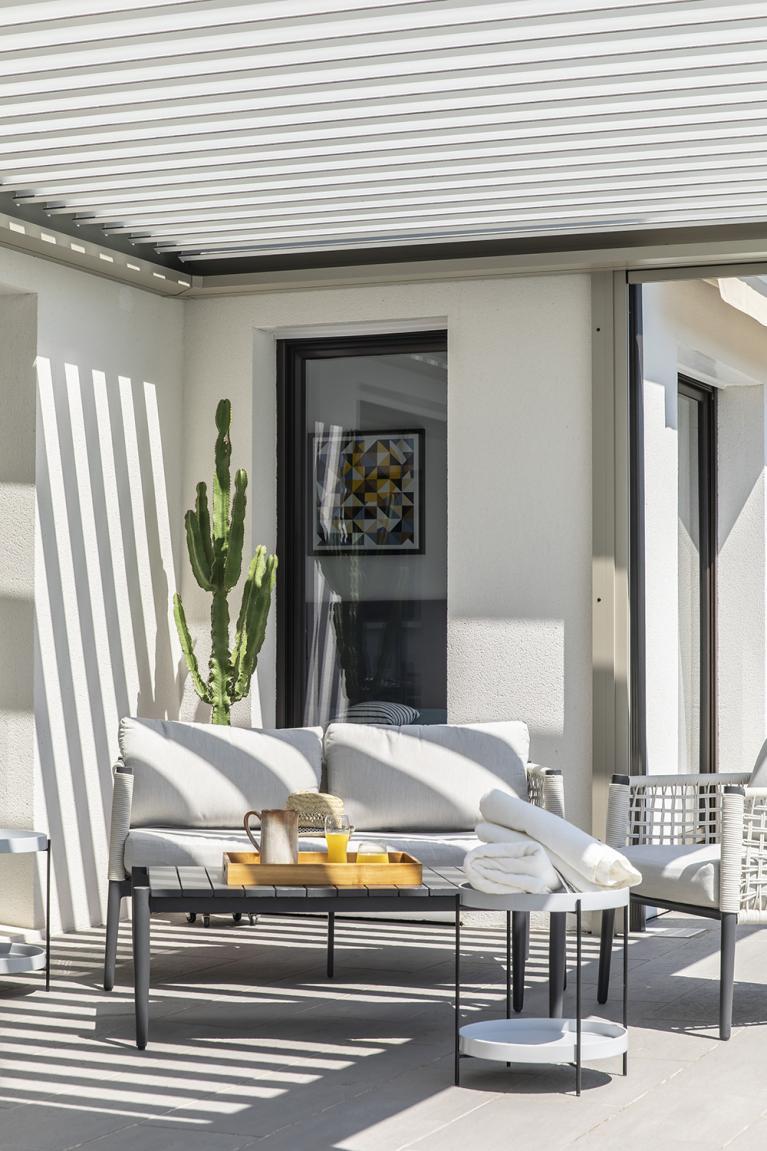
How do you choose your pergola?
Find out all about the different types of pergola in our dedicated guide.
Don't hesitate to contact us about your project.
Our range of bioclimatic pergolas
Find all the articles in the magazine
You have a project?
Would you like a personalised 3D study and a free quotation? Contact us by clicking below.
AKENA is...
Over 40 years of experience
Founded in 1981 by one man, we now have more than 500 employees dedicated to making your project a success.
Made in France
A historic site and two factories covering more than 25,000 m² in Dompierre-sur-Yon in the Vendée region (85)
Innovative and tailor-made products
At AKENA, we are brimming with new ideas to improve and enhance our products.
The European leader in conservatories, pergolas...
But not only! AKENA also offers a complete range of carports and pool houses.
